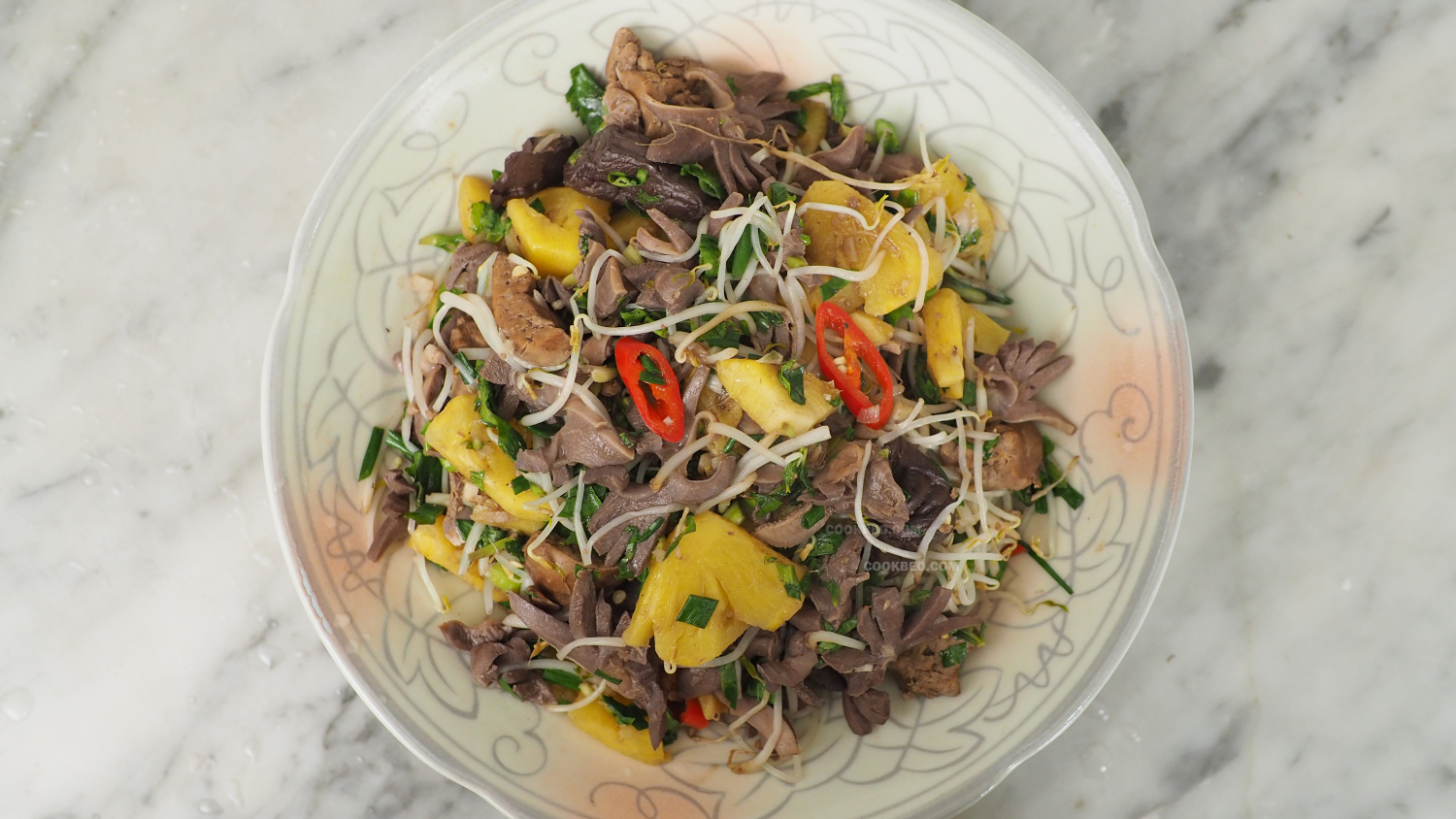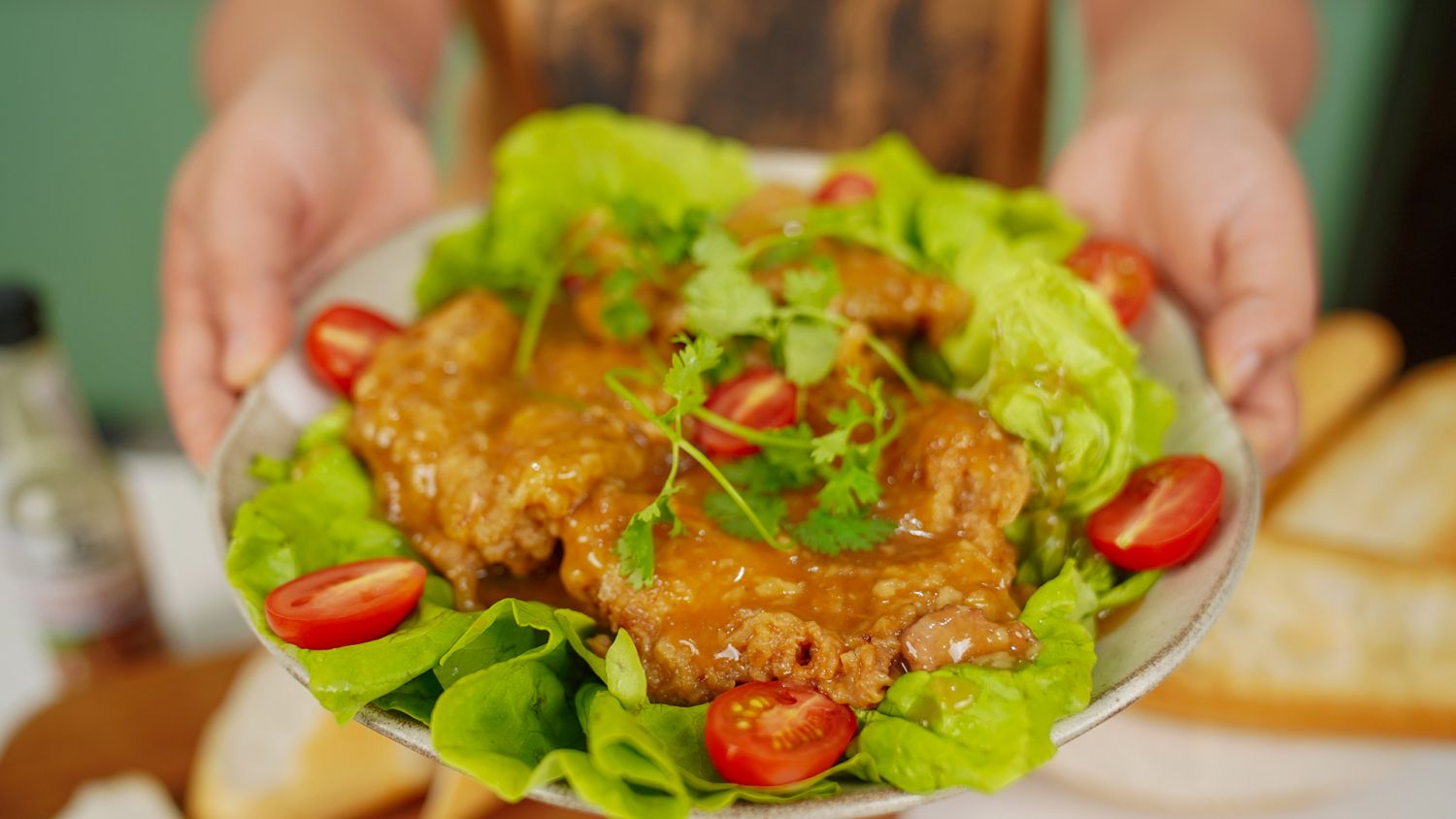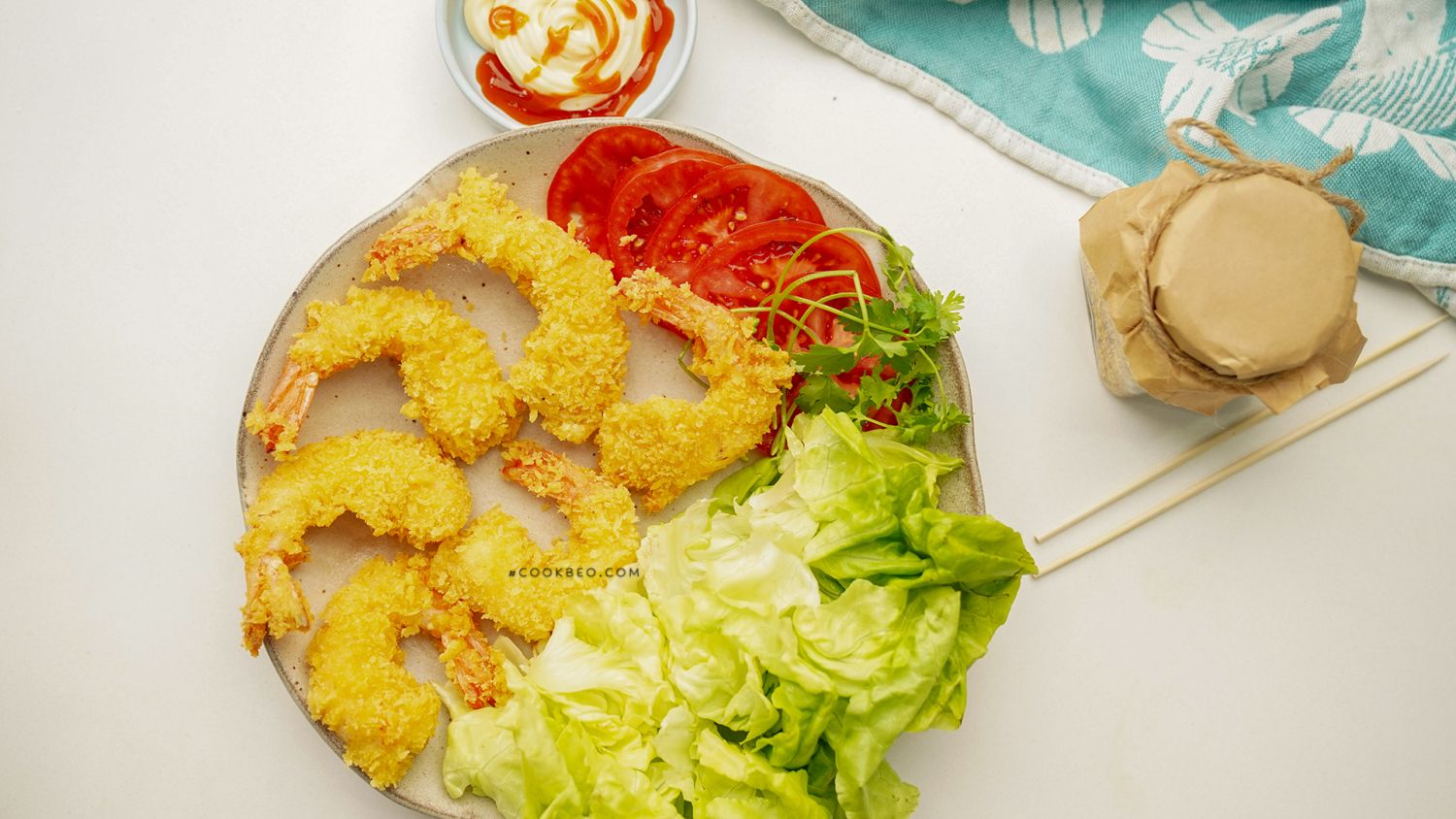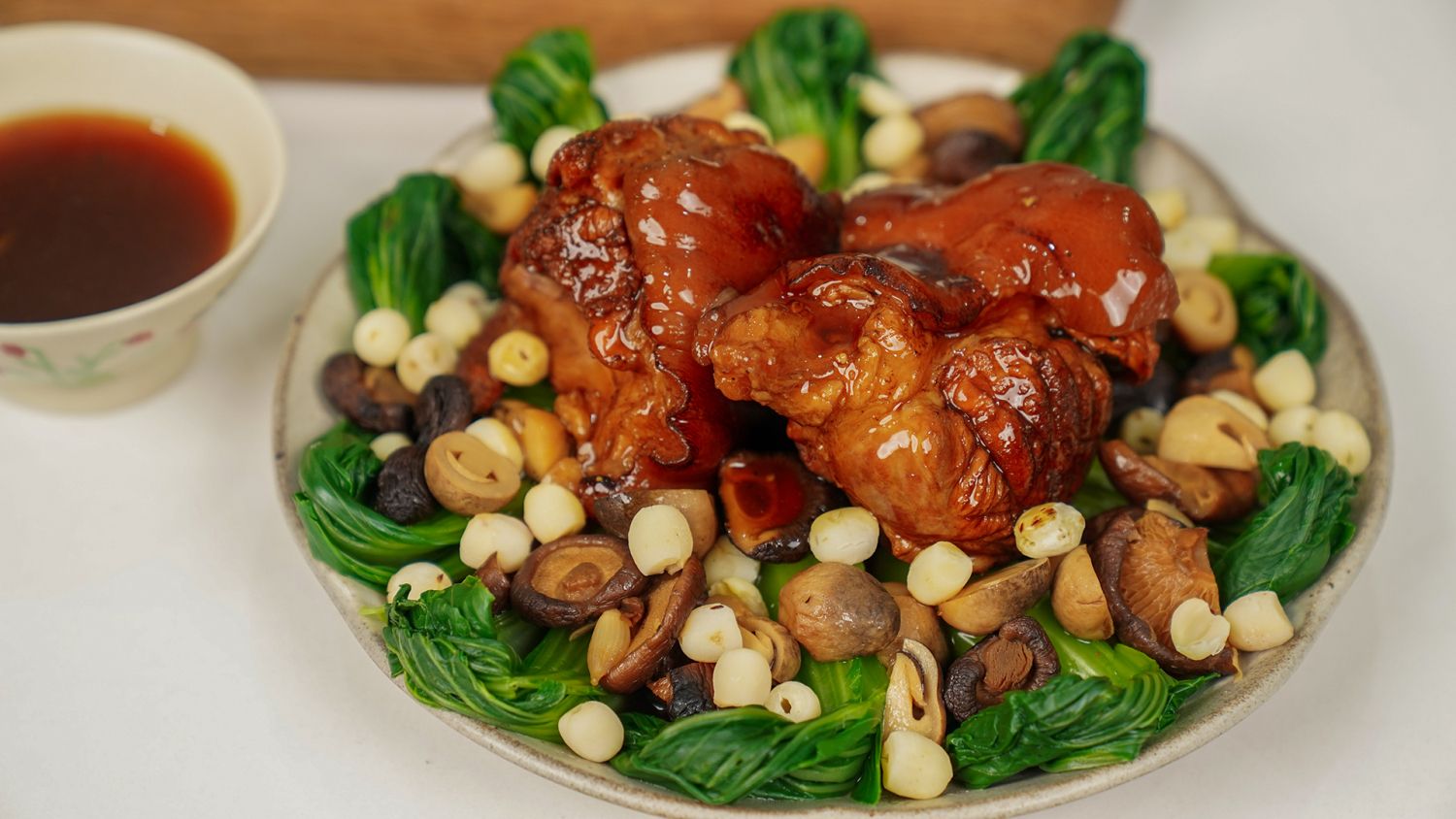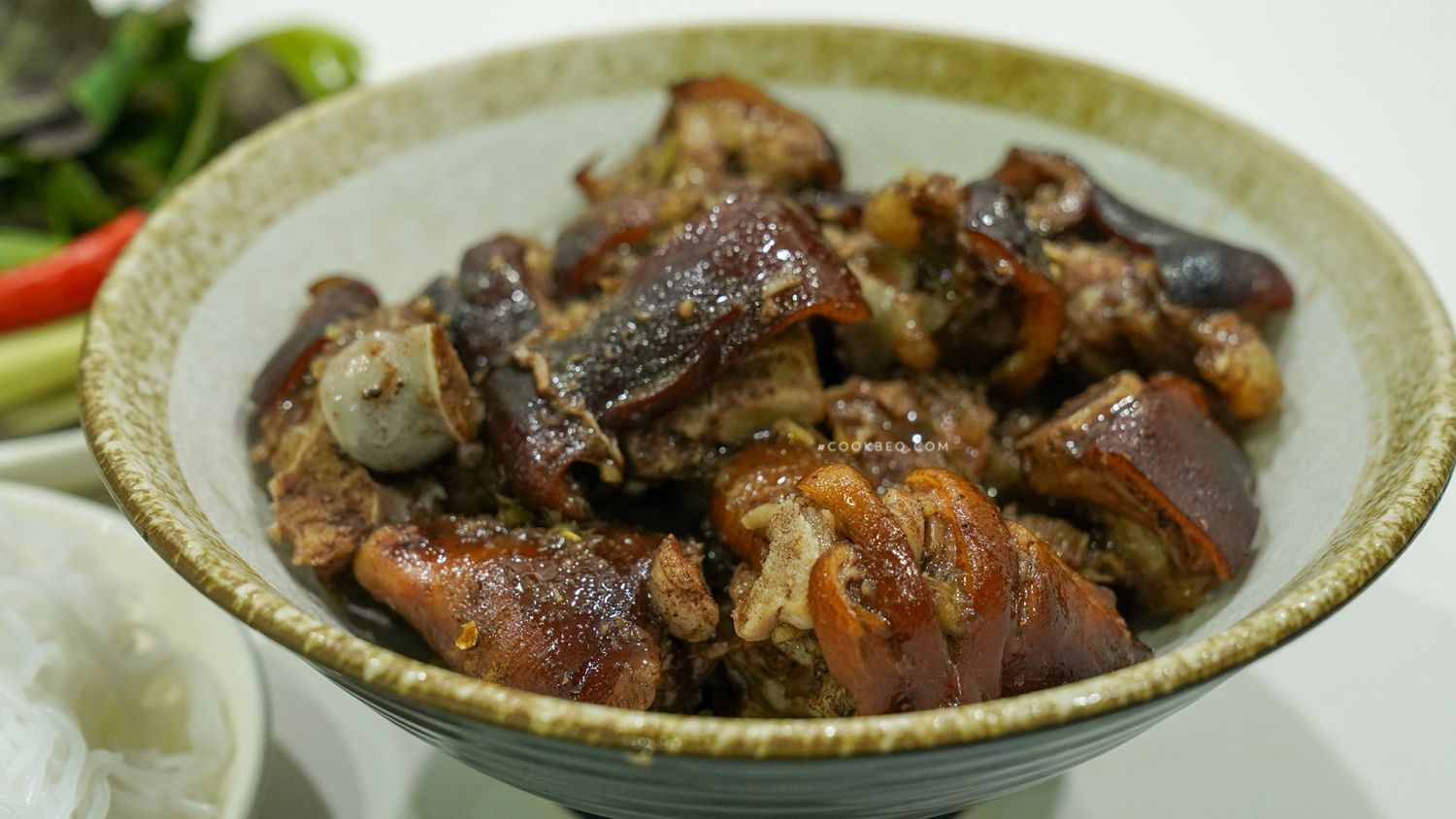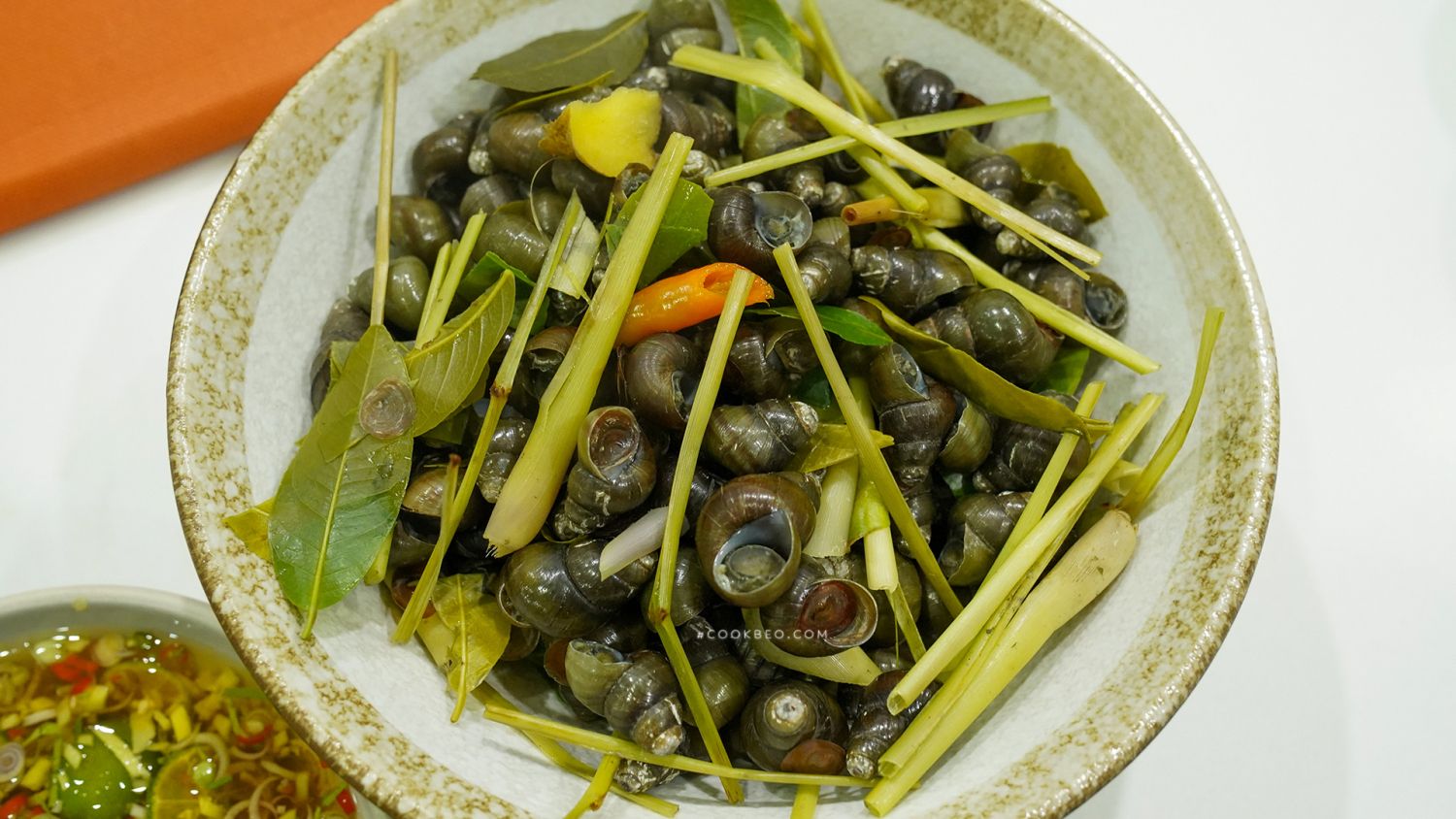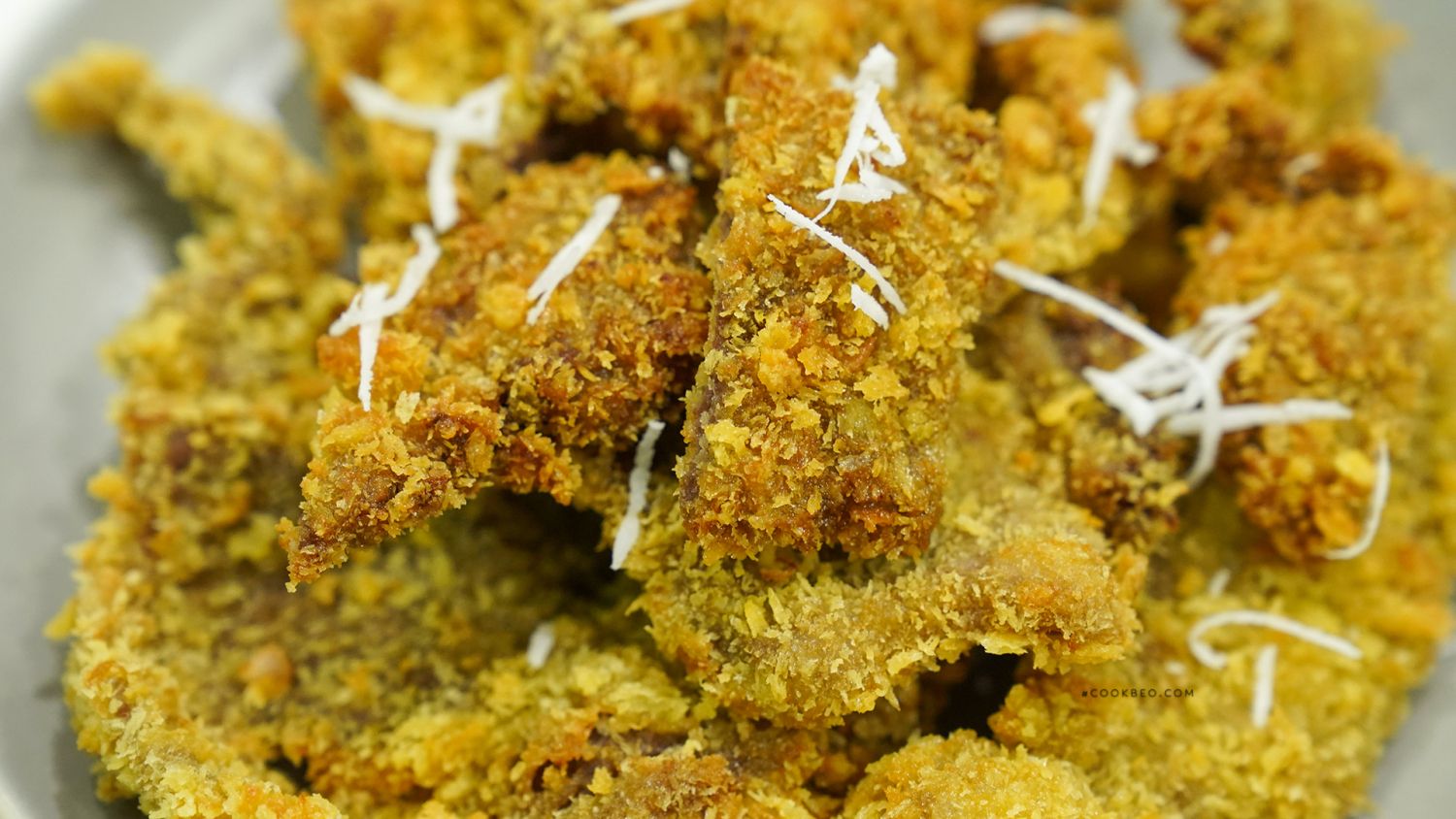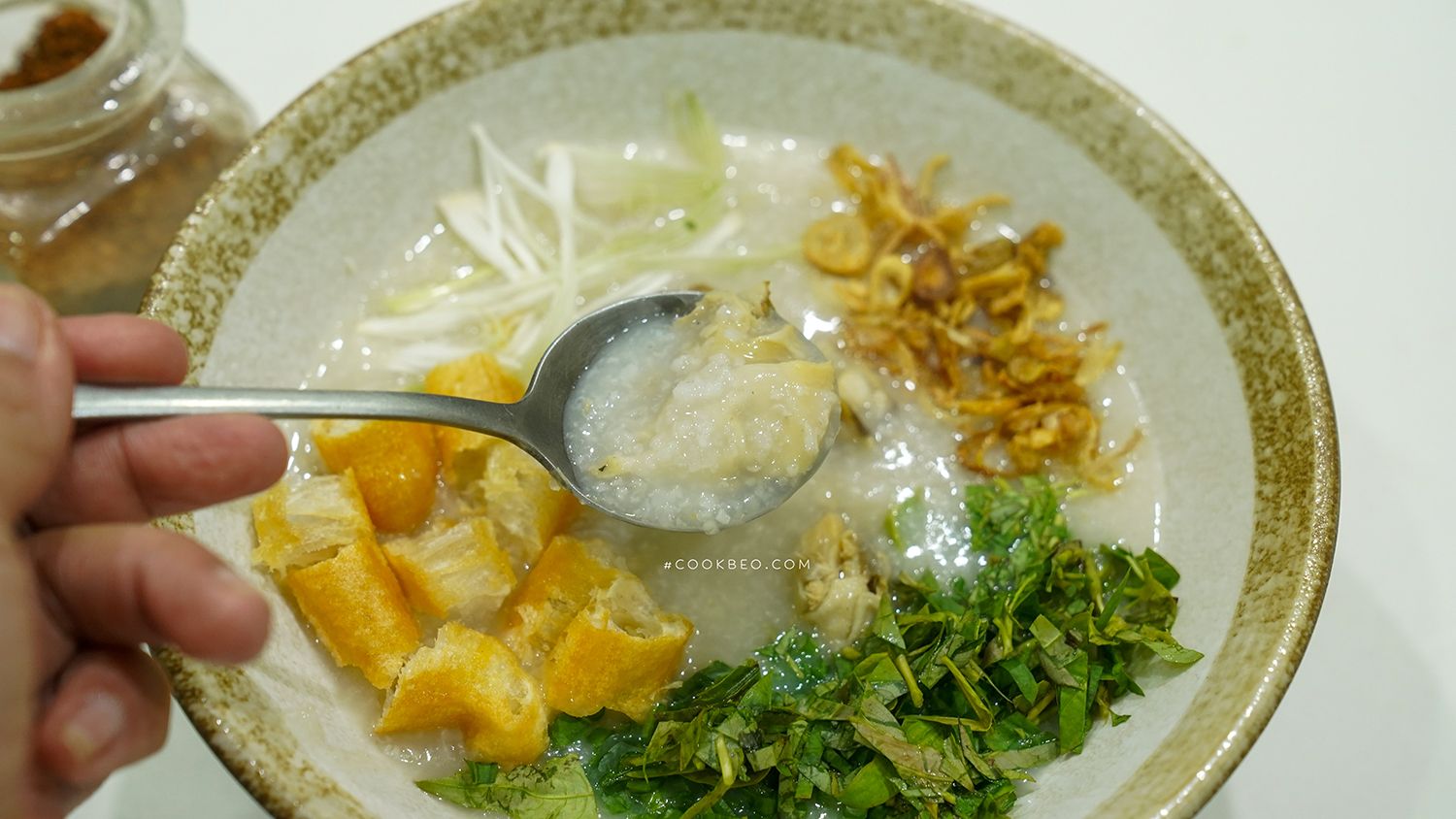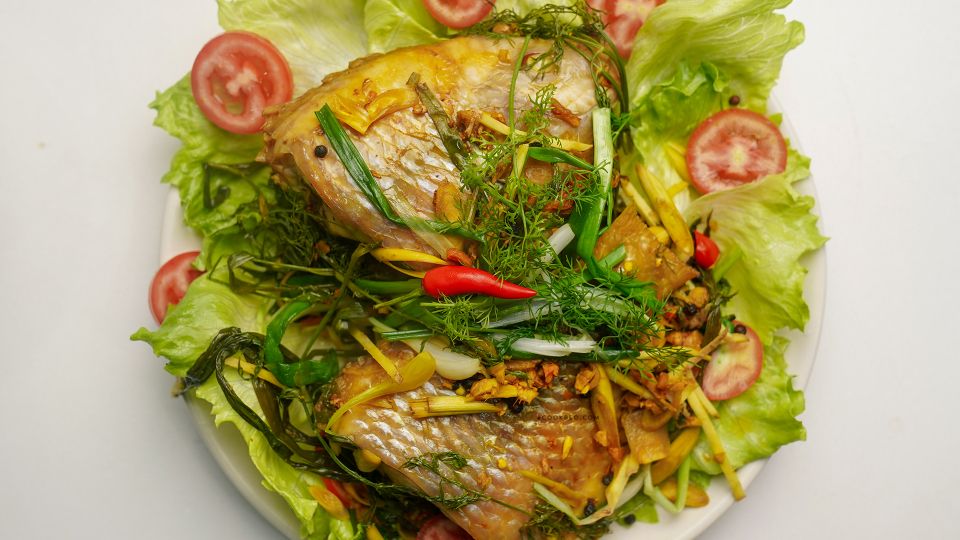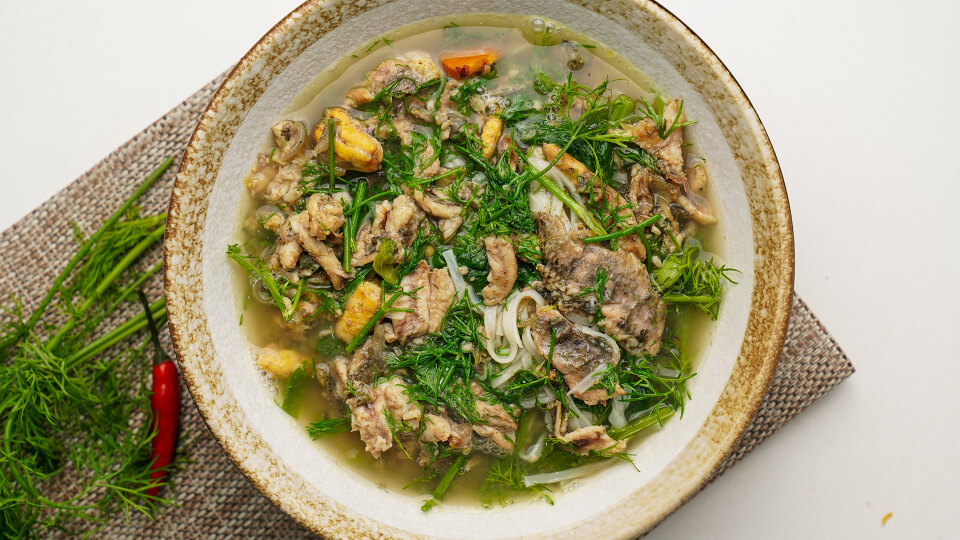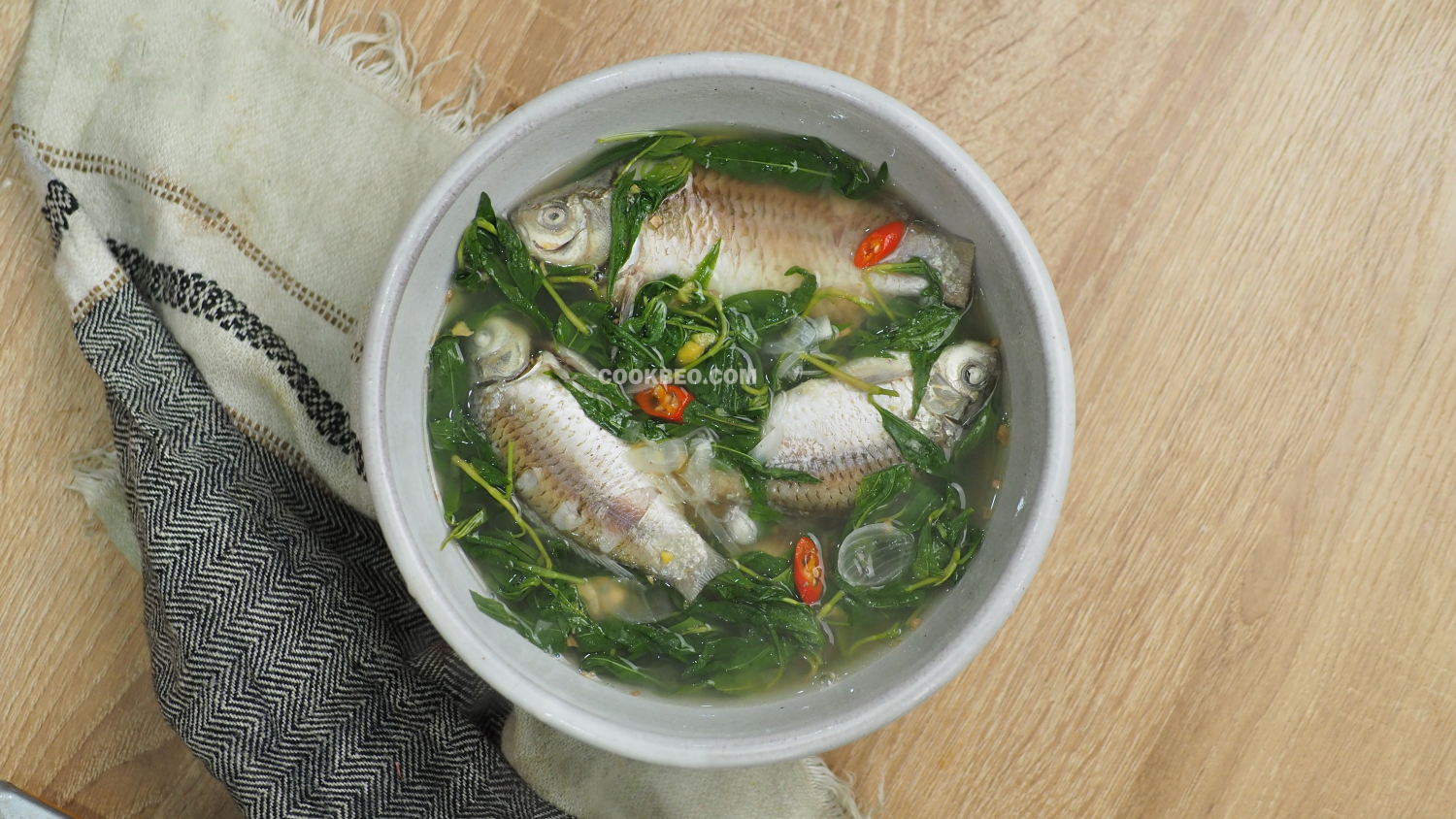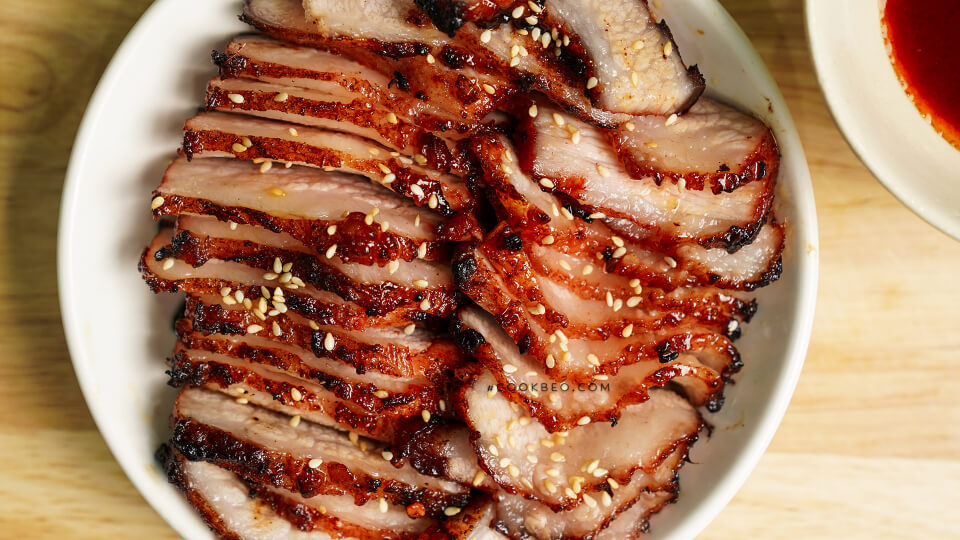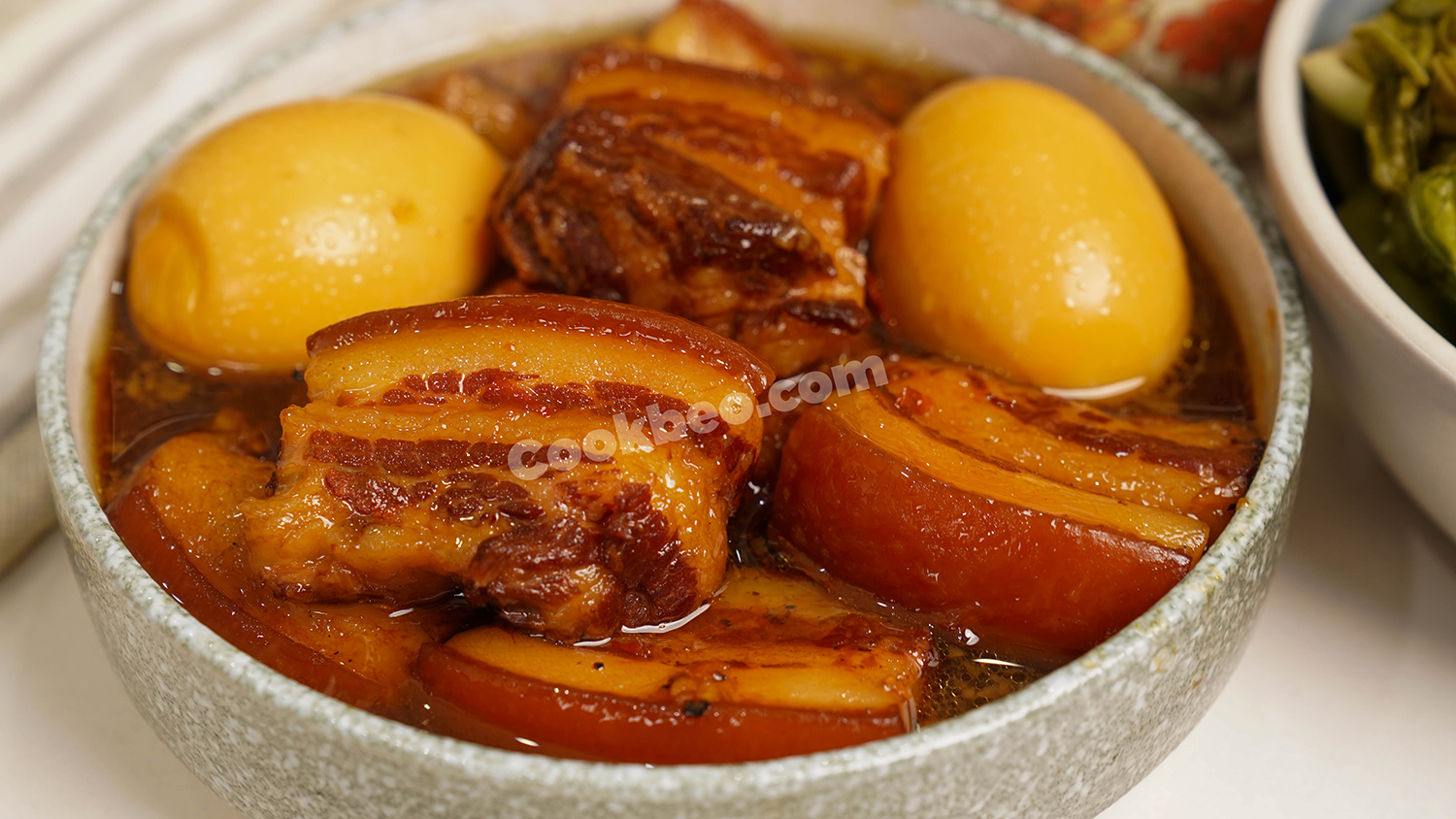How to Make Vietnamese Fish Noodle Soup (Bún Cá)
This guide will help you make a delicious bowl of Vietnamese Fish Noodle Soup (Bún Cá) from scratch at home, with a broth as flavorful as any restaurant's.
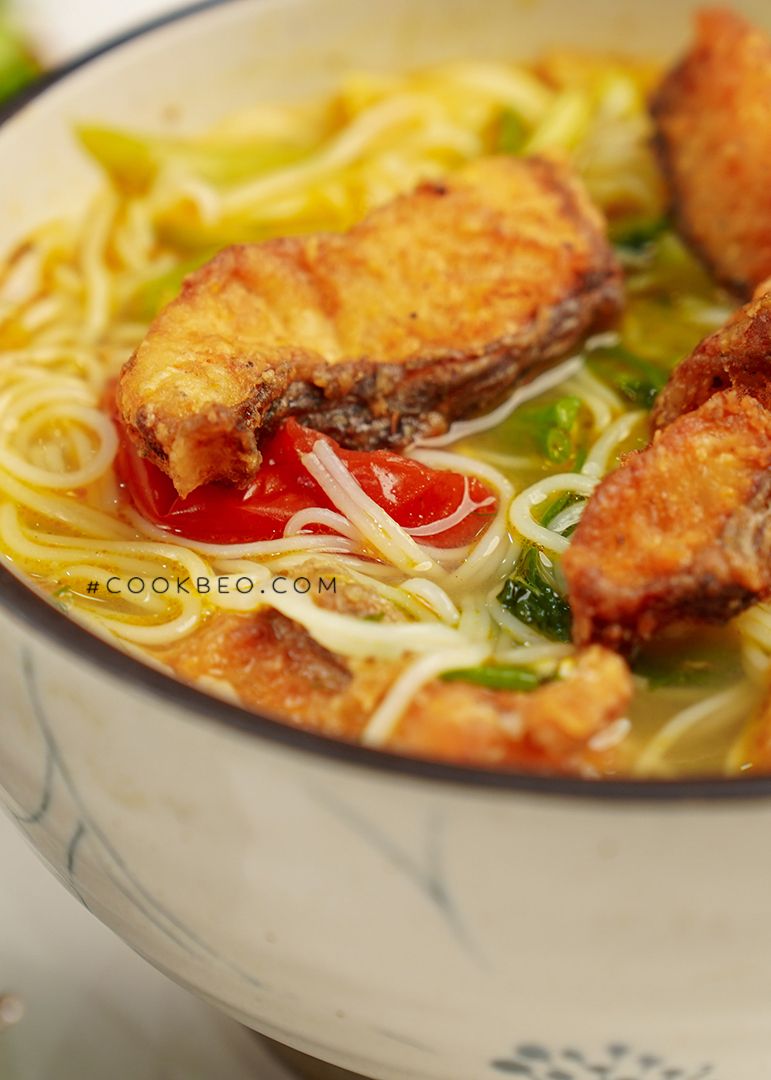
The main ingredient of this fish noodle soup is fish (your choice of type), complemented by essential ingredients like elephant ear stem, water celery, tomatoes, fresh turmeric, or turmeric powder...
Ingredients
- 600g tilapia fillets
- 500g fish bones
- 1 large ginger root
- 10 shallots
- 1 fresh turmeric root
- 5-6 tomatoes
- 5-6 elephant ear stems
- 1 bunch of water celery
- Fermented rice vinegar
- 100g crispy frying powder
- 10g lion's head powder (optional)
- Scallions, dill
- Chili powder, annatto oil (for making chili oil)
- Fresh lime, fresh chili
- Herbs for serving
- Round rice noodles
- Cooking oil, annatto oil
- Seasoning: salt, pepper, MSG, sugar

Instructions
Prepare Ingredients
Prepare the Fish
Ask the vendor to scale and fillet the fish when purchasing. At home, rub the fish with coarse salt and a little ginger wine (if available) to clean and remove the fishy odor. Rinse thoroughly, pat dry, and slice the fillets diagonally into pieces about 1 finger-width thick.
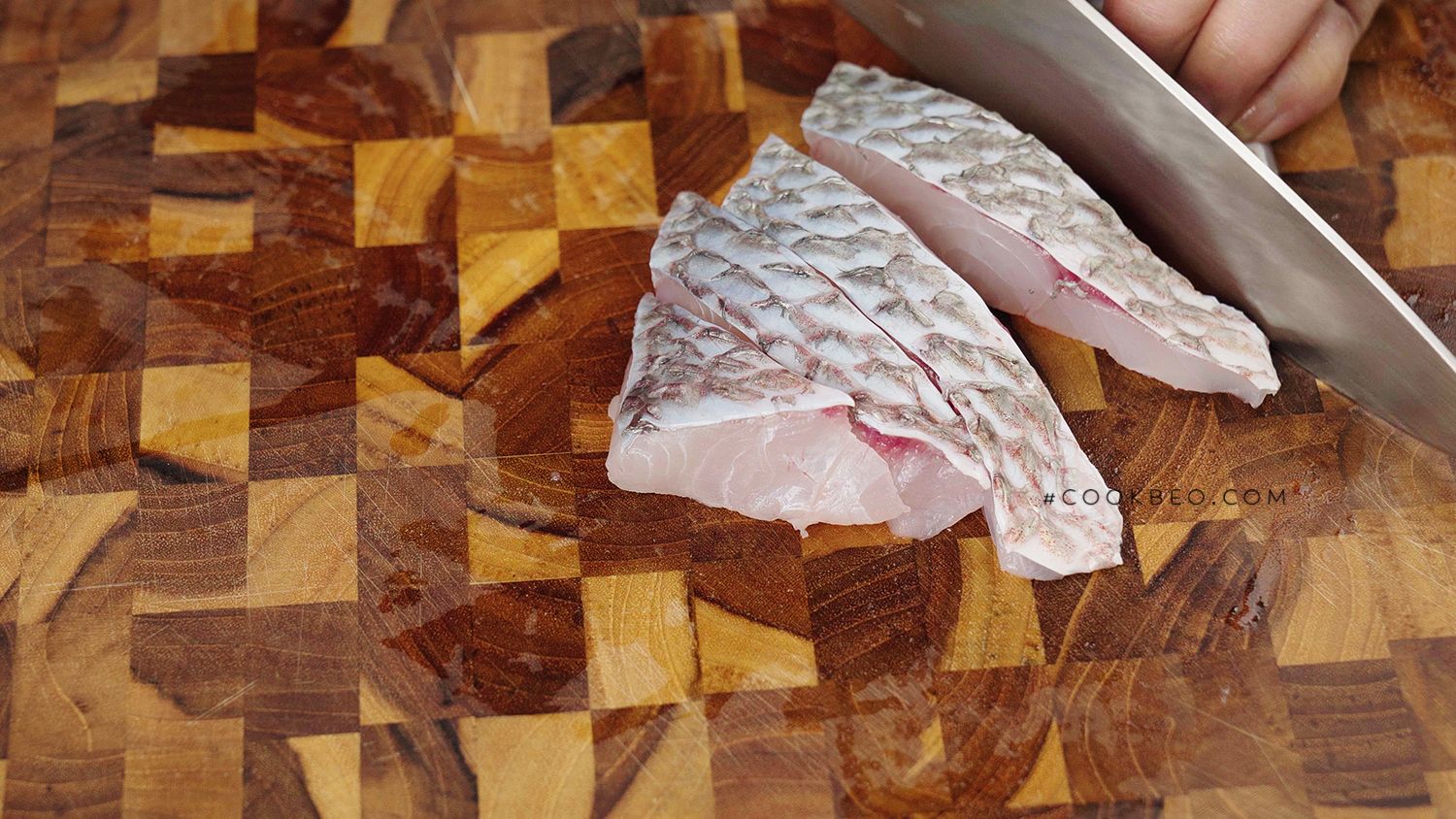
Marinate the fish with 1 teaspoon of roasted salt and a bit of ground pepper. Mix well and let the fish absorb the seasoning for about 20 minutes.
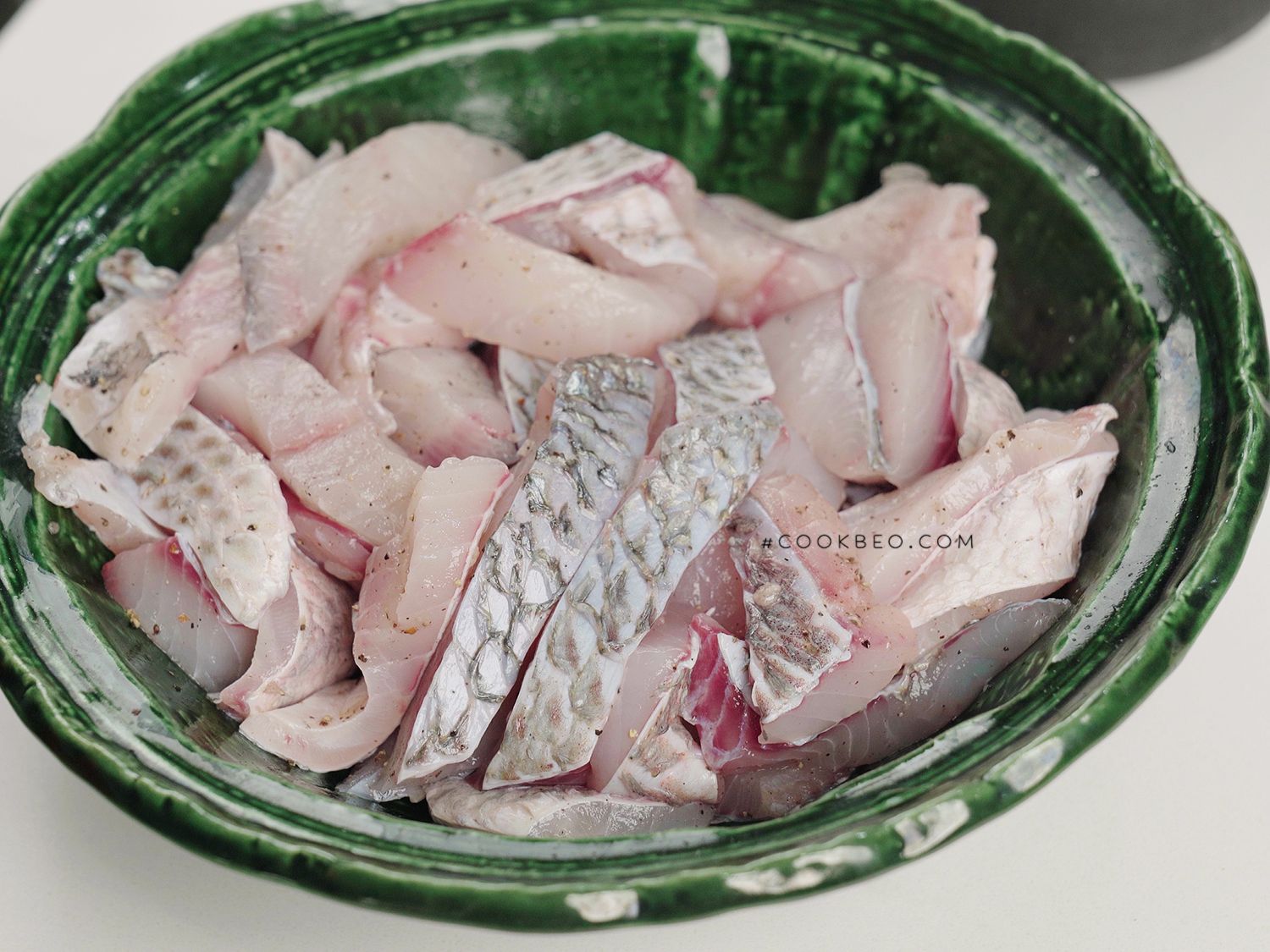
Prepare Other Ingredients
Take 4 shallots and the ginger, and grill until slightly charred. Peel, rinse, and crush them. You can use a microwave to grill quickly if you have one.
Peel and wash the fresh turmeric, then crush it and strain the juice. Squeeze a few drops of lime juice into the turmeric juice to maintain its bright yellow color, as crushed turmeric tends to turn reddish orange over time.
Although fresh turmeric has a fragrant aroma, it is challenging to clean after use, so you may opt for turmeric powder instead.
Peel and thinly slice the remaining 6 shallots. Use some for sautéing the tomatoes, and the rest for frying to sprinkle on top of the noodle soup to enhance its flavor.
Wash the tomatoes and cut them into wedges.
Dry roast the sea salt.
Roasting the salt removes moisture, making it less harsh and more aromatic.
Peel the elephant ear stems, slice them diagonally, and soak in a bowl of water with salt for about 10 minutes. Then rinse, squeeze out the water, and set aside in a basket.
Trim the roots off the water celery, remove any damaged stalks and leaves, and soak in salted water. Rinse thoroughly and cut into 5-6 cm pieces.
Blanch the rice noodles in boiling water, then drain.
Clean and roughly chop the scallions and dill.
Pick, soak, and clean the herbs for serving, then chop them into small pieces.
Rinse the fresh lime and cut it into quarters. Slice the fresh chili diagonally.
Cook the Broth
After filleting the fish, clean the bones with coarse salt, then blanch them briefly. Rinse again and place in a pot to simmer for the broth. It takes about 2-3 hours to extract the sweetness from the fish bones.
Add the grilled shallots and ginger to the pot to neutralize the fishy odor and add fragrance to the broth.
Use about 5 liters of water, which will reduce by about a third after 2-3 hours of simmering. Adjust the water amount as needed.
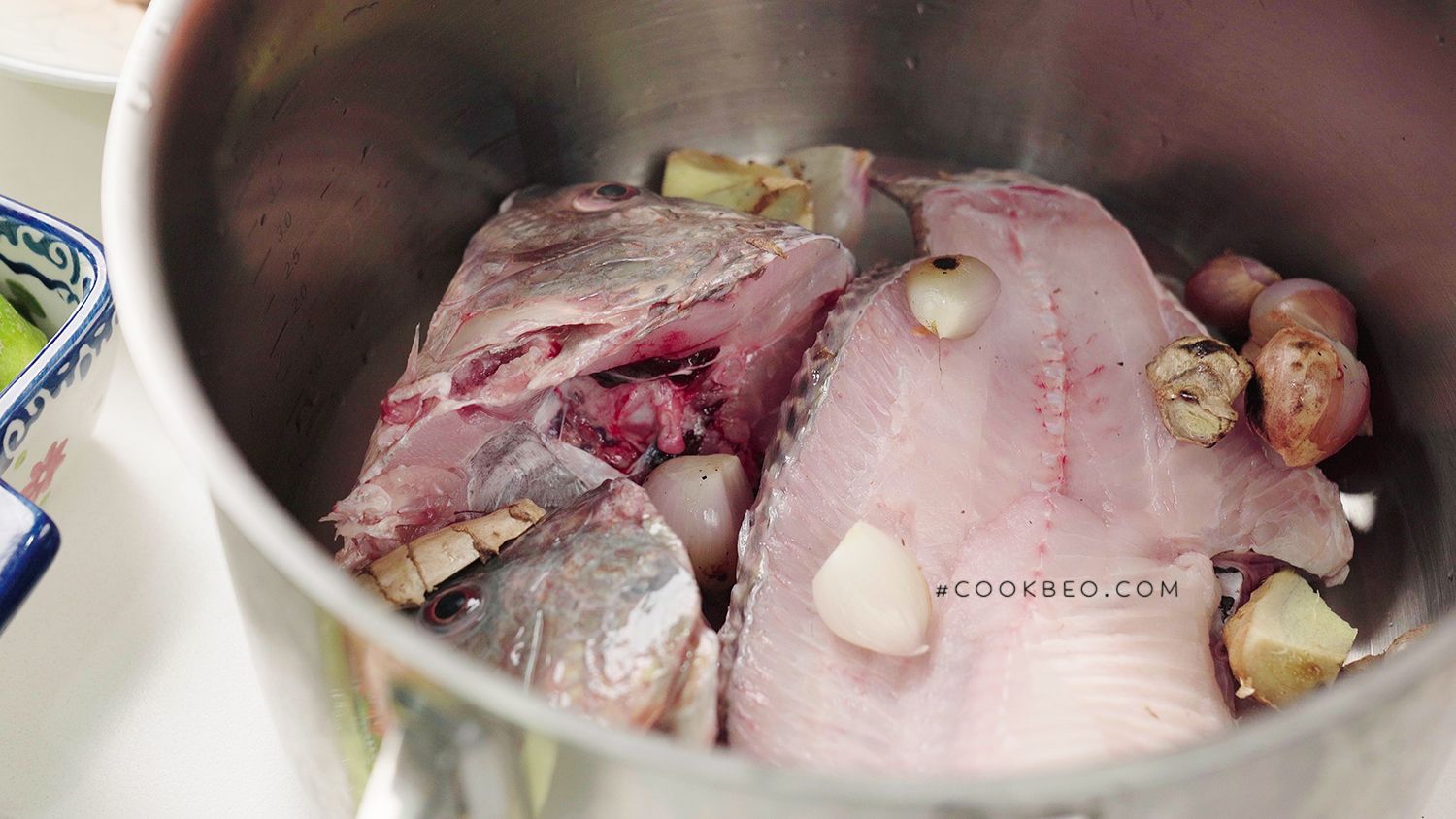
Do not season the broth during the simmering process. Especially at the beginning, when scum forms on the surface, do not skim it off immediately. Wait for it to solidify, then use a skimmer to remove it. Avoid using a ladle to skim, as this will remove some of the fat released from the fish bones.
Prepare Ingredients
Sauté the Tomatoes:
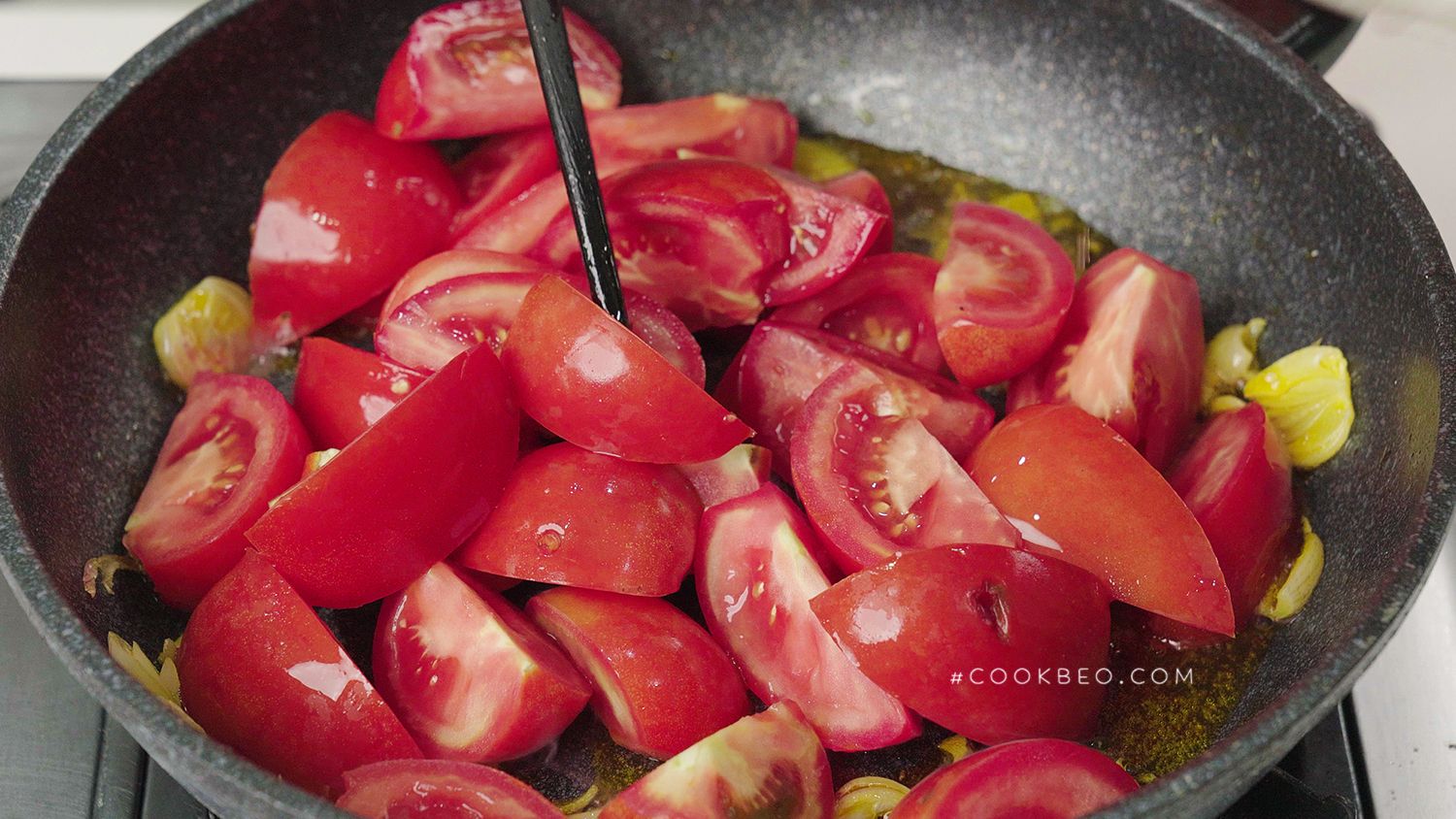
Add 1 tablespoon of cooking oil to a pan, then add 1/4 of the thinly sliced shallots and sauté over low heat until fragrant. Add the tomatoes and stir-fry over high heat for about 30-40 seconds. For a more vibrant color, you can use annatto oil instead of cooking oil to sauté the tomatoes.
Once done, set the tomatoes aside in a bowl.
Make Chili Oil:
Add 1 tablespoon of annatto oil to a pan, heat the oil, and then add 1 tablespoon of chili powder. Stir for about 1 minute, then turn off the heat. Use medium-low heat to avoid burning the chili powder, which can result in a bitter taste.
Set the chili oil aside in a small bowl, placing it next to the lime, fresh chili, and herbs for serving with the fish noodle soup.
Make Fried Shallots:
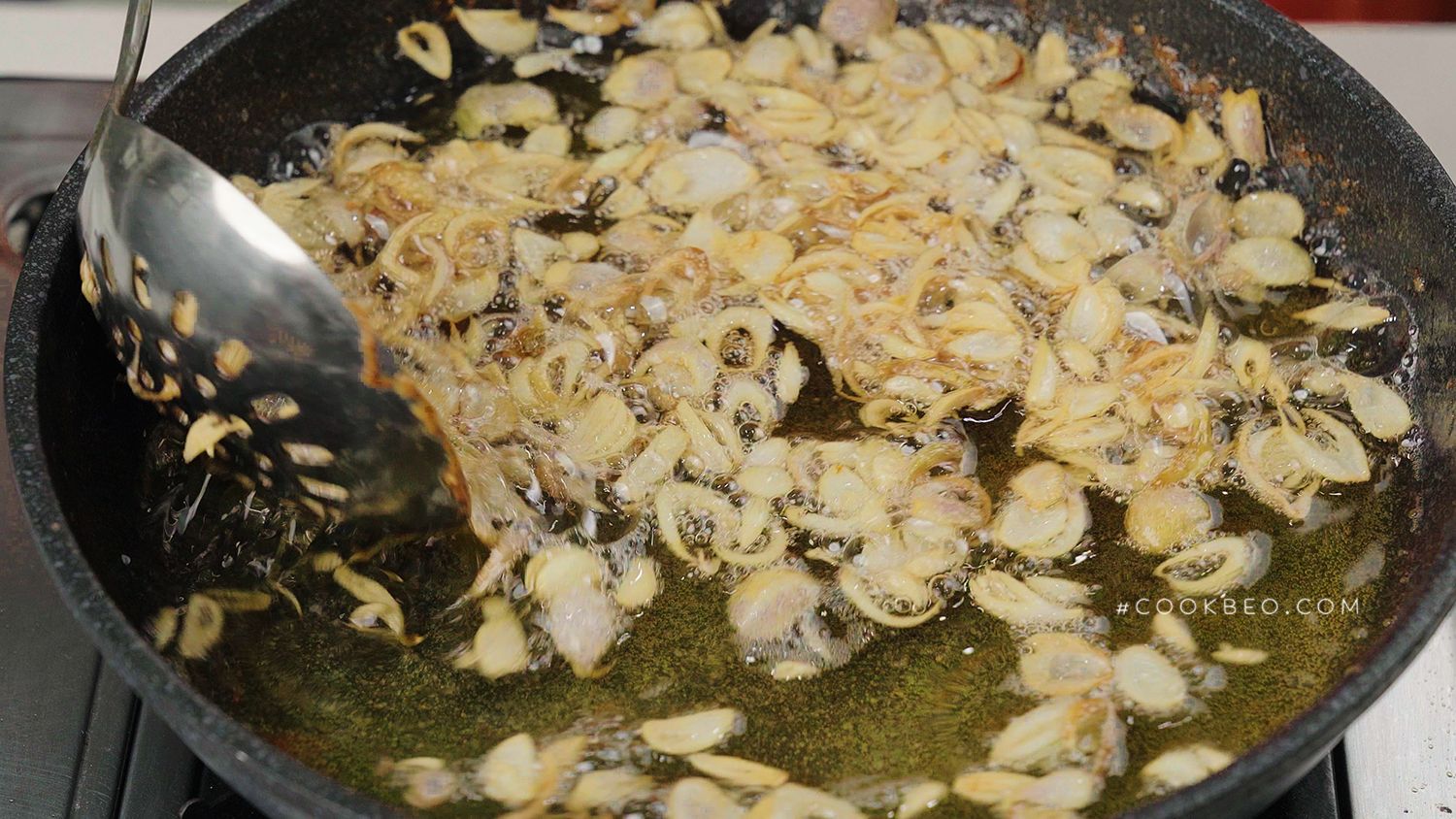
Add plenty of oil to a pan, then add the remaining sliced shallots while the oil is still cold. Fry over medium heat. When the shallots turn golden, turn off the heat and remove them from the oil, placing them on paper towels to drain. Do not fry them until they are too dark, as they will continue to cook after being removed from the oil and may become burnt and bitter.
Adding the shallots to cold oil allows them to release moisture, cook gradually, and turn evenly golden and crispy. If added to hot oil, the shallots will brown too quickly before they cook through, resulting in a chewy texture and an increased risk of burning.
Fry the Fish:

To ensure the fish is crispy and fragrant, coat the fillets in crispy frying powder before frying. Use a non-salty type of frying powder to evenly coat the fish.
You can also add a little lion's head powder (if available) to enhance the aroma and give the fish a beautiful golden color.
Heat the oil used for frying the shallots, then add the fish to fry at medium heat. Turn the fish pieces occasionally to ensure they cook evenly on both sides.
The fish is ready when it floats to the surface, the exterior is firm, and the fillets are golden brown. Remove from the oil and place on paper towels to drain.
Finish and Serve
After about an hour of simmering, the fish bone broth will have developed a certain sweetness. Use a skimmer to remove the fish bones.
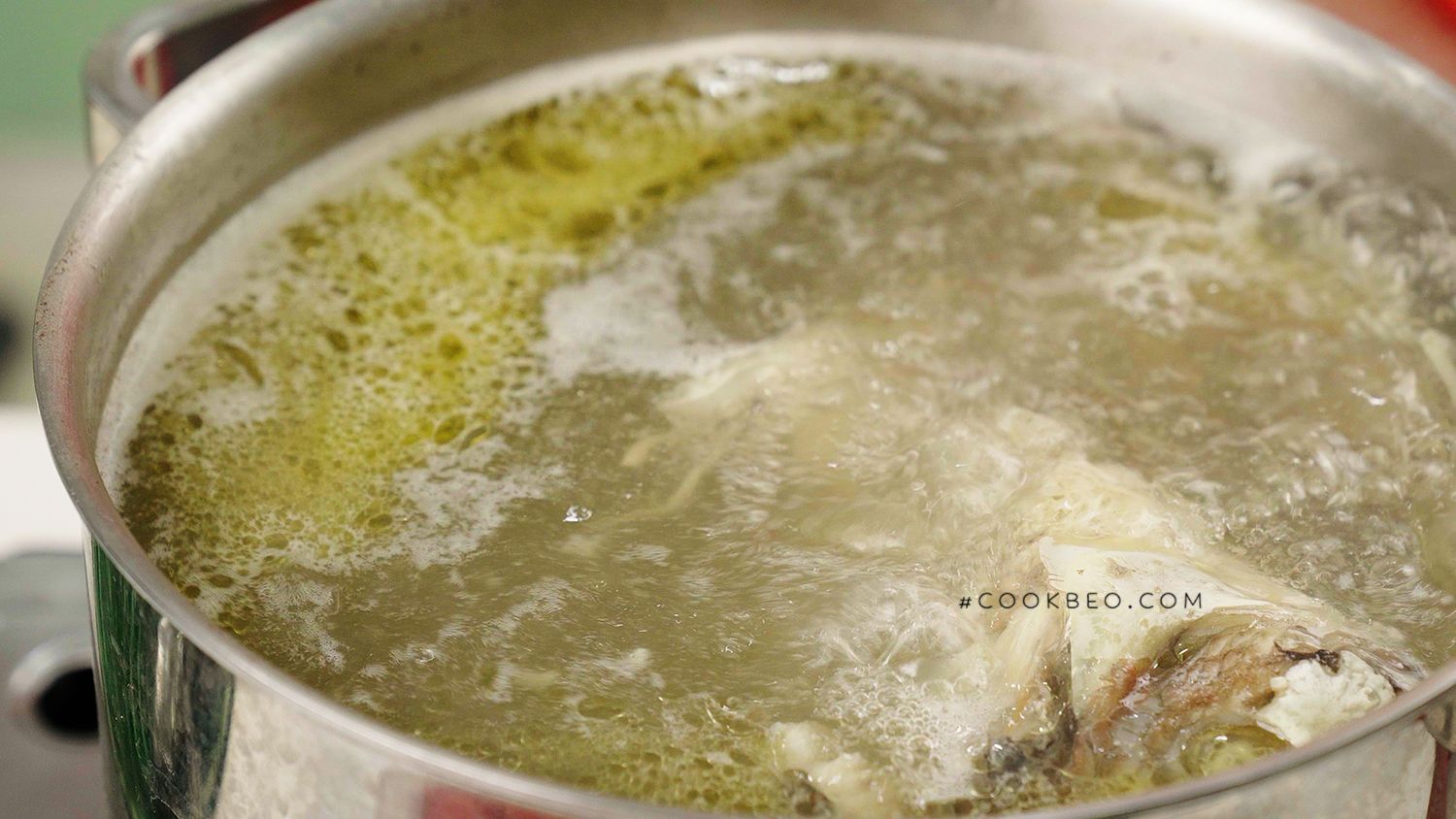
Add the sautéed tomatoes and strained turmeric juice prepared earlier to the broth. Season with roasted sea salt, sugar, fish sauce, MSG, and fermented rice vinegar to create a tangy flavor.
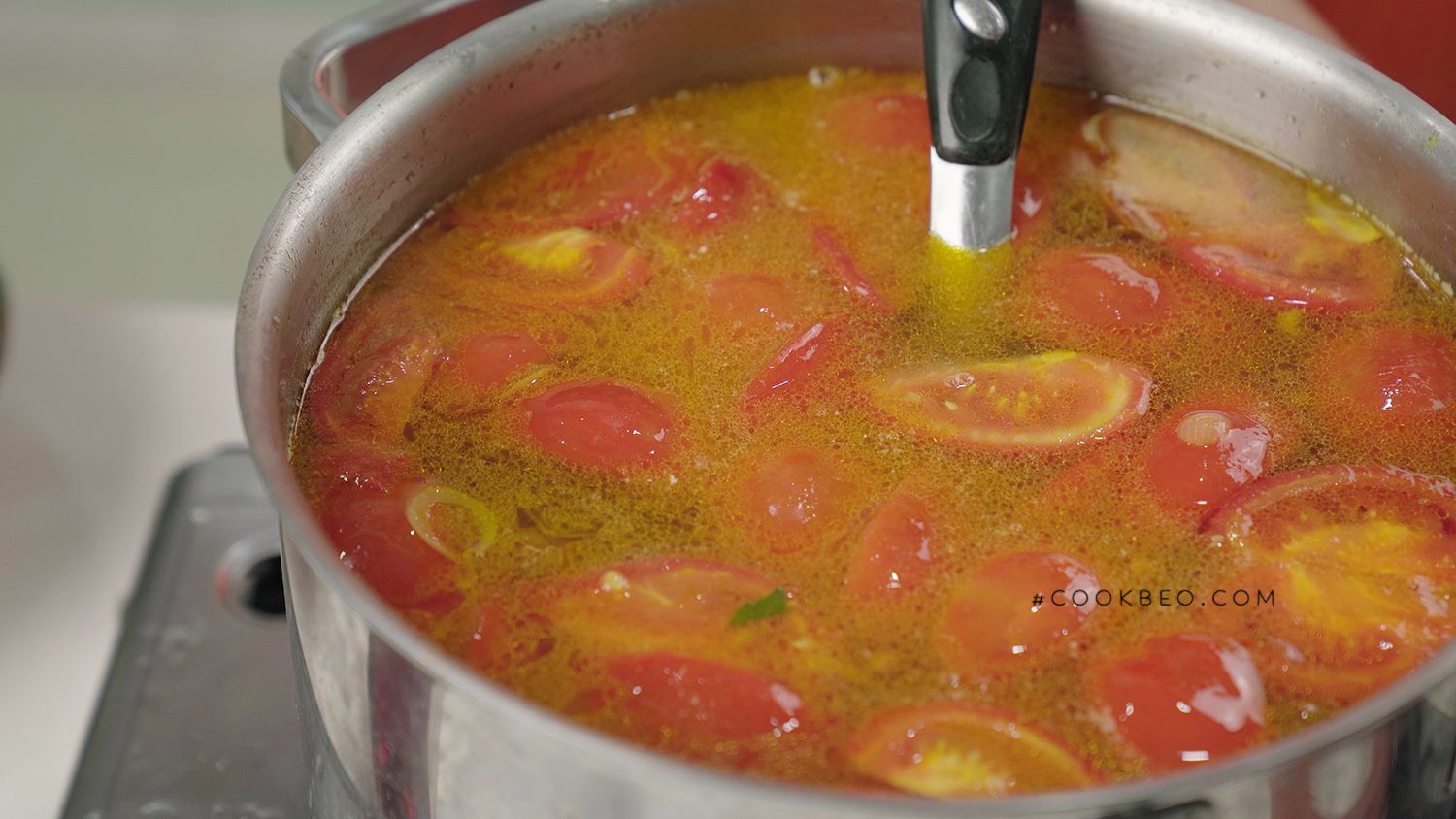
Stir well and let the broth simmer gently. Place the blanched noodles into a bowl. Briefly blanch the water celery and elephant ear stem, adjusting the blanching time based on personal preference, then add them to the bowl with the noodles.
Next, add a few wedges of sautéed tomatoes, 3-4 pieces of crispy fried fish, a sprinkle of crispy fried shallots, and top with scallions and dill. Finally, pour the hot broth over and enjoy the noodle soup while it's still hot.
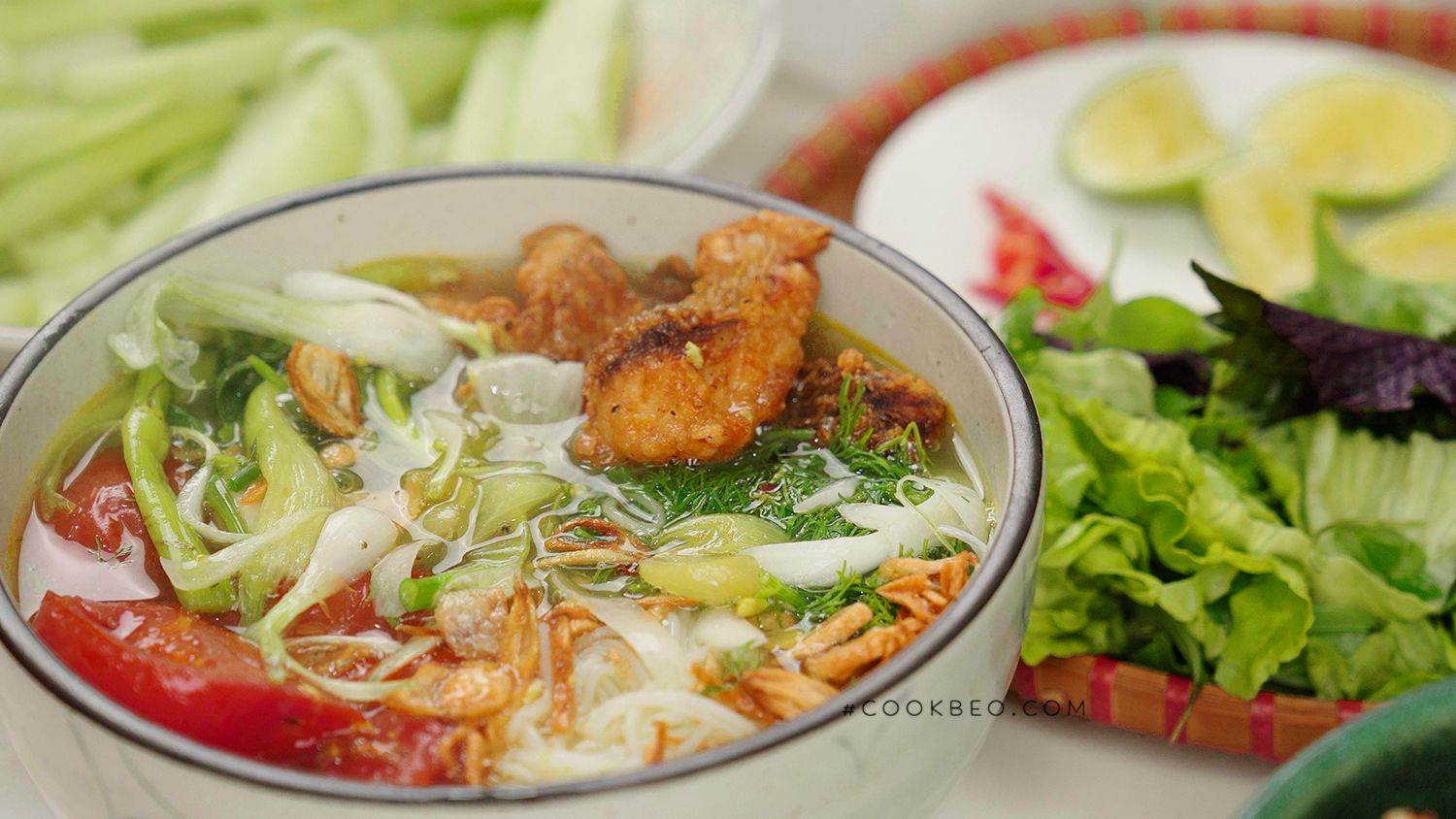
Finished dish: Northern-style fish noodle soup with elephant ear stem
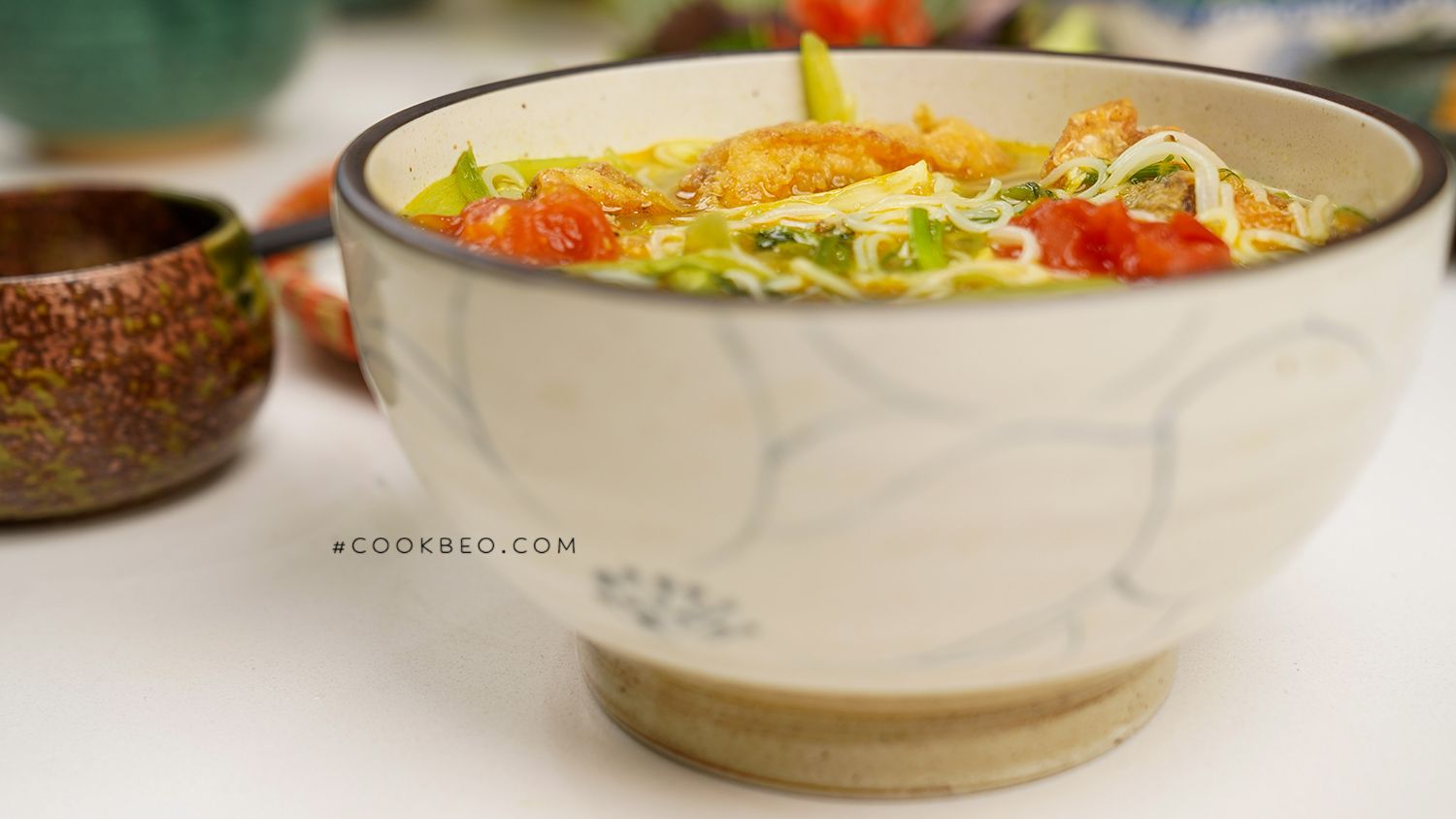
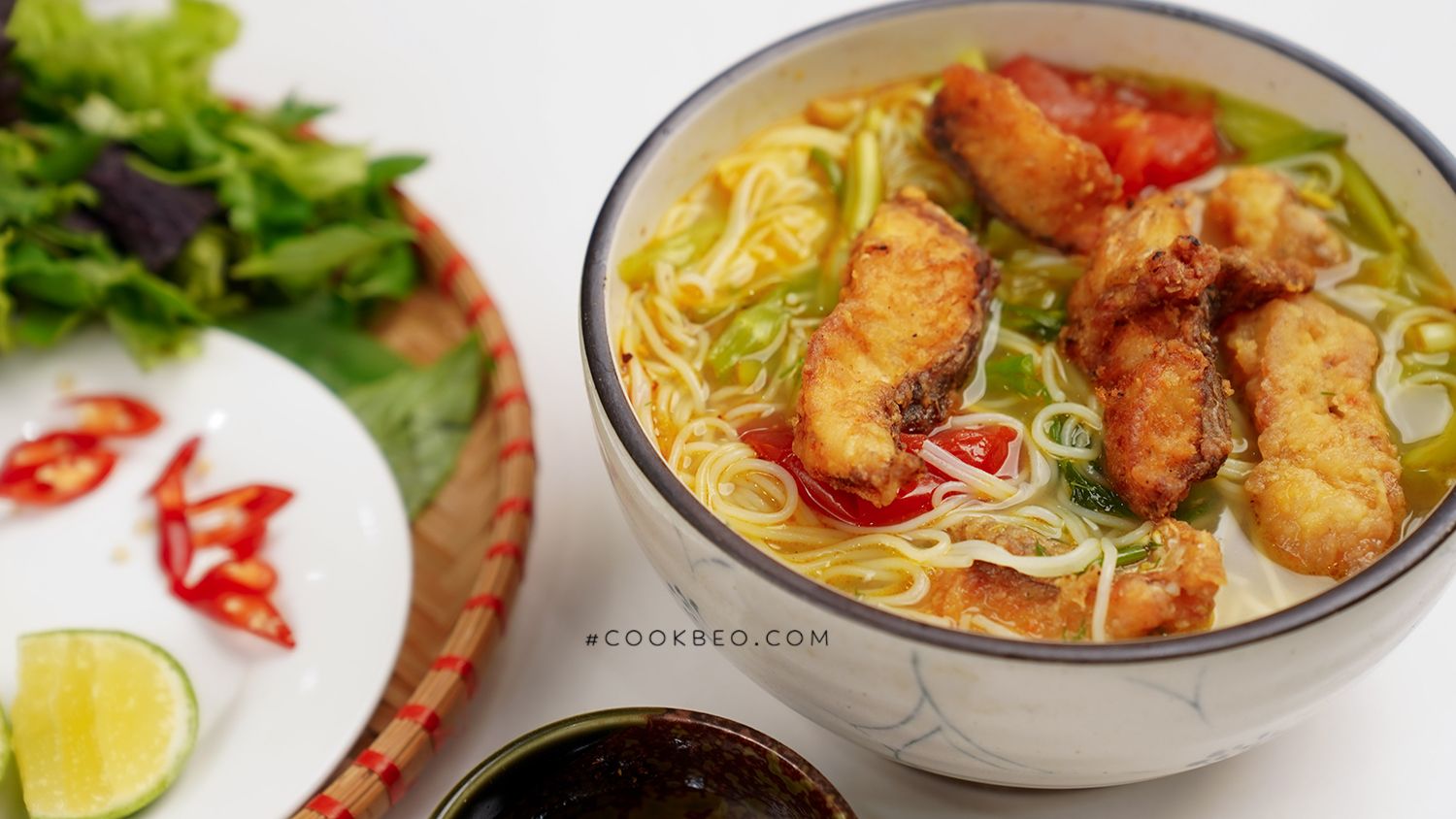

Final Product Requirements
The fish noodle soup has an incredibly enticing aroma, with the fish offering a crispy exterior and a tender, sweet interior. The broth is rich, savory, and slightly tangy, making it a highly palatable dish. This noodle soup is a beloved staple in Northern Vietnam, and in some regions, people substitute the noodles with red rice noodles, which also yields a delicious result.
Video
And that’s it for our guide on how to make fish noodle soup (Bún Cá). We hope you’re fully satisfied with the results and feel confident in showcasing this dish to your family and friends!




